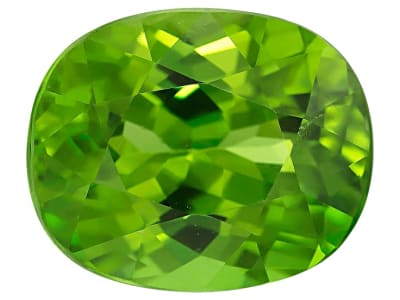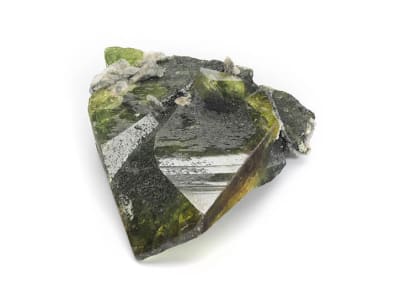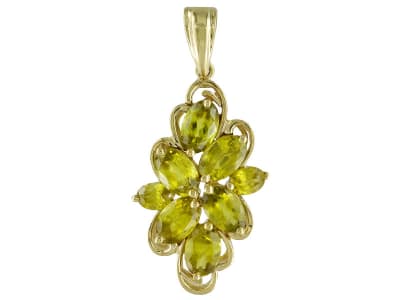Sphene, better known to mineralogists as titanite, is a spectacular gemstone prized by collectors for its diamond-like luster and high dispersion. The name sphene is derived from a Greek rook meaning wedge for the shape of its crystals. The color can range from yellow to red, brown, brownish, or yellowish green to green, and black. Sphene has a high birefringence and shows doubling of facet junctions.
General Information
Common Name
Sphene
Species
Titanite
Transparency
Opaque-Translucent
Dispersion
Strength: Strong Fire Value: 0.051
Refractive Index
Over The Limit 1.843-2.110 Tolerance: (+0.020/-0.020)
Birefringence
0.100- 0.160
Optic Character
Biaxial
Optic Sign
Positive
Polariscope Reaction
Doubly Refractive (DR)
Fluorescence
SWUV: Inert to weak brown
LWUV: Inert
LWUV: Inert
Pleochroism
Trichroic, (in green gems) strong greenish yellow, yellow to brown, and colorless; (in brown gems) strong yellow, reddish-orange, and brownish yellow and brownish orange, (in yellow gems) moderate to strong greenish yellow, brownish-orange, and colorless
Hardness
5-5.5
Streak
White
Specific Gravity
3.600-3.480 Typical:3.520
Toughness
Fair
Inclusions
Sphene occasionally contains tiny crystals that align in straight rows or "feathers", natural inclusions, actinolite needles. Twinning is common. Stones have strong dispersion and eye-visible doubling.
Luster
SubAdamantine, Resinous, Adamantine
Fracture
Conchoidal, Subconchoidal, Splintery
Cleavage
Good, in one direction
Chemical Name
calcium titanium silicate
Chemical Formula
CaTiSiO5
Crystal System
Monoclinic
Chemistry Classification
Silicate
Sphene Colors
-
 Black
Black -
 Brown
Brown -
 Colorless
Colorless -
 Gray
Gray -
 Green
Green -
 Multi-color
Multi-color -
 Orange
Orange -
 Yellow
Yellow
Alternate Names
Titanite, Chrome Sphene
Countries of Origin
Viet Nam; United States of America; Ukraine; Uzbekistan; Zimbabwe; Madagascar; Zambia; United Arab Emirates; United Kingdom of Great Britain and Northern Ireland; Venezuela (Bolivarian Republic of)
Care
Sphene is a soft stone, so be mindful of scratching.


